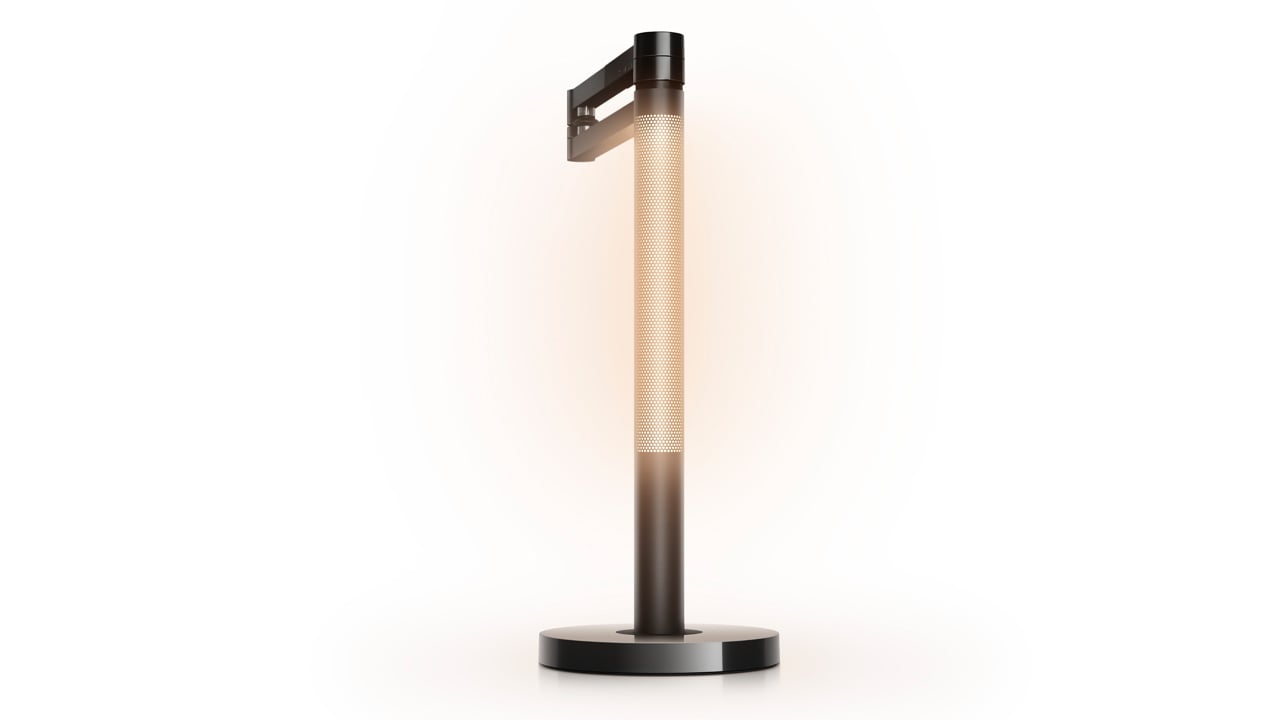I Got an $850 Desk Lamp Expecting It to Change My Life
Spoiler: it kind of did. Here's how a high-tech light made me more productive

When I left my office job in 2018 to pursue freelance life after working nine-to-five desk jobs for seven years, I was armed with a capital-P Plan. I immediately turned a natural-light-filled spare bedroom into an office, complete with a plant-covered desk facing out onto the backyard and a folder of chronologically organized invoices and paycheck stubs. I had a routine. I put on makeup and got dressed every morning, even if I had nowhere to be that day. I even scheduled lunch breaks and afternoon walks.
That lasted a grand total of three months. Reader, I haven’t sat down at my desk since last summer. I gradually shifted from working in my office to working at the kitchen counter, then the dining table, followed by a short and unproductive stint on my bed (do not recommend) until, finally, I landed on the living room couch, which is currently where I spend most of my days.
Is my work station set up in a way that’s ergonomically correct? My physiotherapist and my recurring carpal tunnel syndrome flare-ups say hell no. But the heart wants what it wants. However, the real tragedy, occasional wrist pain aside, is the lack of overhead light in my living room. Unsurprisingly, I’ve adopted a slight squint when I work, resulting in a couple of entirely unwelcome wrinkles that have set up shop on my forehead. And it’s not just my eyes (and skin) that are suffering; as is the case with many freelancers who work from home, my sense of what time of day it is (and, if I’m being honest, what day it is) is a little wonky.

So when Dyson offered to send me a LightCycle Morph to try out over the winter, I jumped at the chance. The $850 lamp, which took over five years and 90 engineers to design, is able to track the daylight patterns in your location and adjust its brightness throughout the day according to those patterns. I was intrigued because this meant that not only would I have a light perched atop the ottoman that’s next to the couch but the auto-adjusting brightness—which changes based on Toronto’s light patterns—would (hopefully) make me feel like a functioning, active member of society rather than a woman who spends her days yelling at Google Docs. I had the option to use the corresponding app to choose from different activity settings, like studying or relaxing, or make my own custom activity setting, which resulted in different light temperatures and brightness levels covering four categories: task, indirect, feature or ambient. More often than not, I just let it do its thing based on the time of day rather than what I was doing, but that’s just personal preference. The LightCycle Morph also takes age into consideration because our eyes deteriorate as we get older. (Did you know that a 60-year-old needs four times more light than a 25-year-old?) And unlike its predecessor, the original LightCycle, the Morph, which just launched in January, features an adjustable arm that is able to rotate and switch between being a reading lamp, ambient room lighting and so much more.
To be clear, the Dyson LightCycle Morph is not a SAD lamp, which is commonly used in the winter as a treatment for seasonal affective disorder. “SAD lights, or dynamic lights, make claims to ‘simulate’ or ‘replicate’ daylight, but unless they adjust intelligently, all they can do is change their colour temperature and brightness according to a set curve that’s repeated day after day,” explains Simon Davey, senior design engineer in Dyson’s lighting division. “However, daylight is much more complex than that. The LightCycle Morph uses a unique time-, date- and GPS-driven algorithm to constantly calculate and recalculate the ever-changing colour temperature and brightness of daylight anywhere in the world. The built-in algorithm adjusts the light every 60 seconds in relation to daylight exactly where you live, giving you the right type of light at the right time of day for your location.”
Setting it up was super easy, and as soon as I connected my LightCycle Morph to the app, I was ready to go. Since I started using the lamp as soon as winter hit, I was worried that it would reflect the bleak sunlight patterns that we’re used to in December (think: dreary and gloomy). But I was assured by the Dyson team that the LightCycle Morph uses a GPS system to create an algorithm that adjusts light based on daylight patterns that have been developed over time, which means it doesn’t take weather into account. So when it was rainy and dreadful outside, I wasn’t met with a dreary Dyson lamp that was barely emitting any light. (Can you imagine?)
In fact, one of the things that makes the LightCycle Morph so reliable is that it doesn’t even use a bulb. “We’re used to disposing of light bulbs when they fail,” says Jake Dyson, industrial engineer and the son of Dyson founder James Dyson. “And [while] good efforts are being made with LED technology to make them last longer, there are still issues with LED light bulbs. LEDs generate heat within the light bulb that can’t escape fast enough. This damages the electronics within and we get diminished light output and a shift of colour from the light bulb. This is exactly why we don’t use light bulbs in [Dyson] lighting products; we design and engineer our own customized light engine for maintaining the right type of light at the right time of day.” The result? Guaranteed consistent light quality for 60 years (!!!), which actually makes the price tag a bit more understandable.
The know-it-all lamp can be set up to turn on when you enter the room, thanks to a motion-detecting sensor, and turn off when you’re not there (or have fallen asleep on the couch instead of working on your looming deadlines). Sure, this is probably the Morph’s most pedestrian feature, but it shouldn’t be overlooked. As someone who’s often guilty of forgetting to turn on a light before sitting down to work only to be startled by all-encompassing darkness after eight motionless hours, I found this to be a very useful feature. Along with the Dyson LightCycle Morph Desk, Dyson launched a floor version, which comes with all of the features of the original but is (duh) a floor lamp. That’ll set you back even more—$1,200.
So did the Dyson lamp make any significant difference to my work habits? Truthfully, yes. Between the gradual light adjustments throughout the day (though not too gradual—the light changes were noticeable enough to snap me out of an Instagram-scrolling trance and remind me to get back to work), the ability to rotate the arm and transform the lighting in my space as I moved from writing during the day to watching TV or reading a book at night and the warm (and oddly motivational) greeting in the morning, I can honestly say that I’ve had a more productive (and less squinty) two months than usual. But did it make such a difference that I could justify splurging on an $850 lamp? At the moment, my bank account thinks not, but the price tag is more understandable now that I’ve played around with it.
More than anything, the Dyson LightCycle Morph made me generally more aware of the time of day, so I never found myself shocked by the numbers on the clock—something that can be a regular occurrence when you work from home and don’t have cues to stop working (like your coworkers leaving or the office lights being turned off). So as I pack up my chic, expensive companion and prepare to send it back to the brand, I’m finding myself inspired to get up off the couch and head back to—you guessed it—my trusty ol’ desk.









